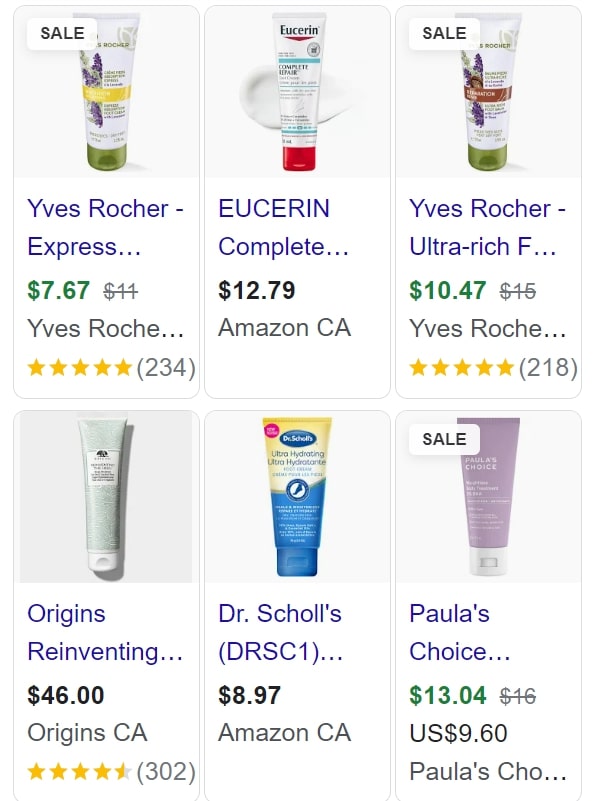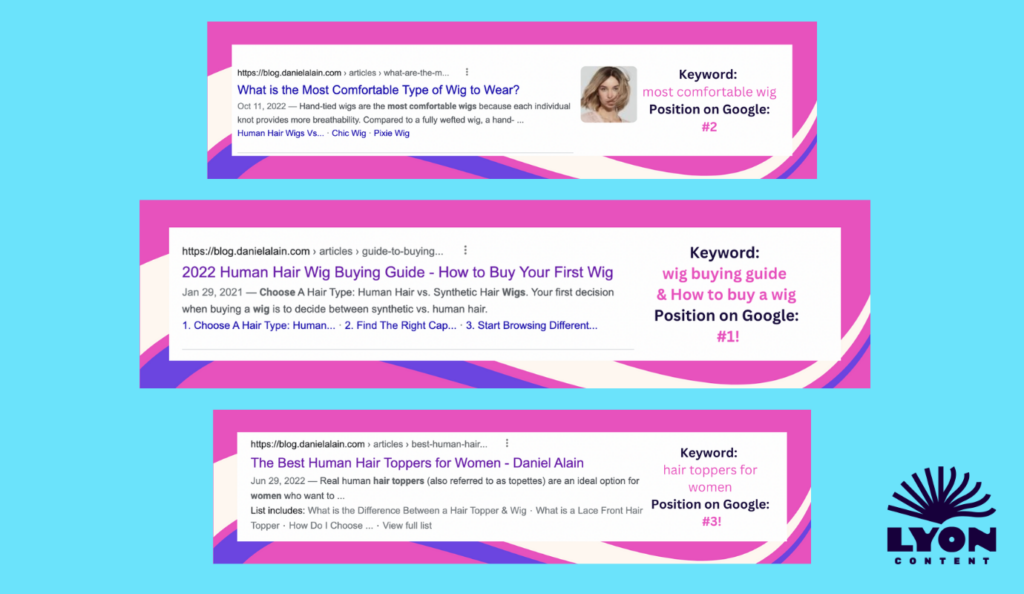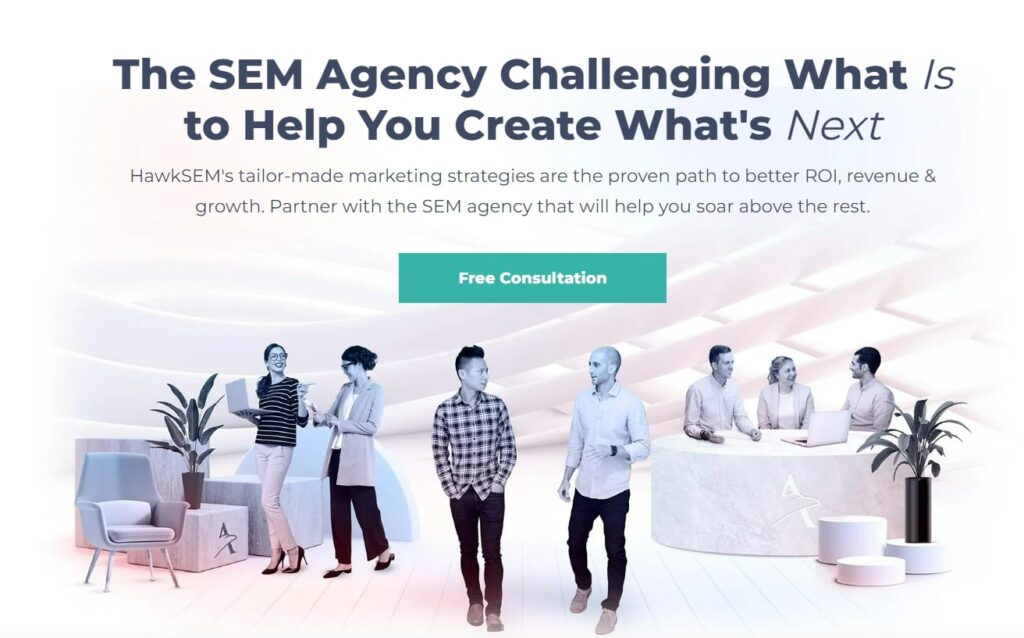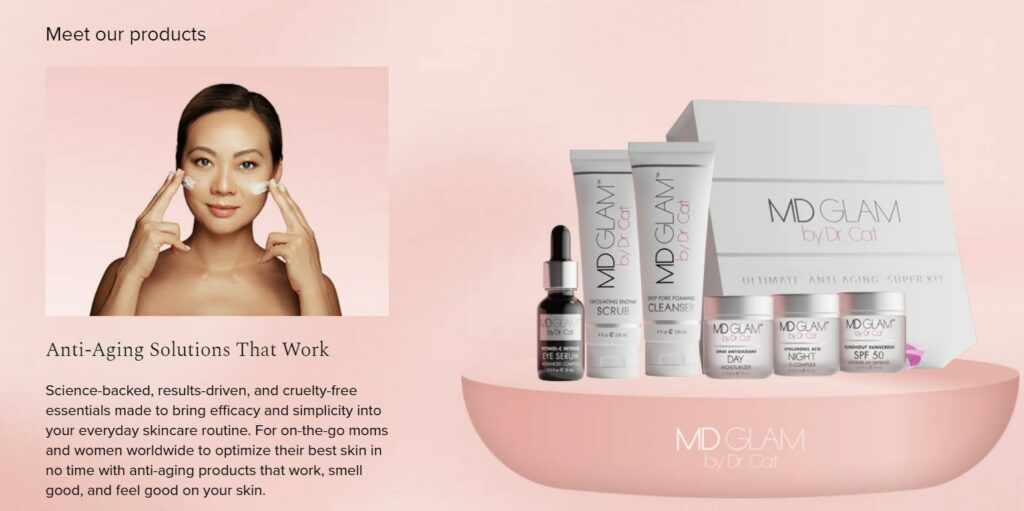What you’ll learn
If you ring your bestie to spill some tea, you’re already tuned in to your intended audience. You know her phone number, the best time to call, and how much she’ll relish all the juicy gossip you’re about to share.
As for brands? Sometimes, they call up everyone in their phone book. Instead of casting a wider net, they end up going straight to voicemail.
If this is the case with your brand, it might be time to zero-in on your intended audience, meaning your target audience.
We caught up with Lyon Content CEO and target audience detective Christina Lyon to find out what an intended audience is, tips to identify yours, and how to captivate them with kickass content.
What is your intended audience?
Your intended audience is the specific group of people most likely to benefit from your business’s offerings, engage with your brand, and buy your product or service.
But Christina cautions against seeing your entire web traffic roster as your intended audience (i.e. that wide net we talked about). Instead, your goal is to convert that larger audience and target your ideal customer:
“Ultimately, you want an intended audience that’s sales qualified,” says Christina.
But how do you determine who they are? According to her, it’s all in the data:
“When you’re first defining your intended audience, you might lack the data to inform whether that audience will make a purchase,” says Christina. “That’s why it’s smart to refine your audience personas as you gather more intel on their buying behaviors.”
Now, where can you find all this intel?

3 Steps to Identify Your Target Audience
Your intended audience is closer than you think. In fact, they’re hiding in plain sight—you just need to zoom in on the right data to uncover them.
1. Who is your intended audience? (demographics)
Demographics is a solid foundation to begin sketching your audience personas. Consider age, location, gender, likes, dislikes. You might speak differently, and appeal differently to a group of 13-year-olds versus middle-aged men, right?
For example, who is the intended audience for our marketing agency client HawkSEM versus our luxury skincare client MD GLAM? Christina explains the difference:
“HawkSEM’s intended audience is savvy, seasoned marketers for ecommerce and SaaS brands looking for high-level marketing content to improve their marketing campaigns,” says Christina. “Whereas MD GLAM’s target audience is affluent women in their 30s and 40s looking for luxury, surgeon-developed skincare that actually works.”
How does that translate in our work? We focus on tailoring their content’s tone of voice to resonate best with their intended audience (more on that later).
In the meantime, here are a few places to find audience demographics:
- Analytics dashboards for all social media platforms
- Google Analytics
- Purchase history
- Customer surveys
- Social listening
Social listening might not always tell you everything about an audience’s age and income, but it does offer clues about their general age group and gender.
But those aren’t the only insights social listening can reveal.
2. What are their problems, needs, wants, and desires?
Ever spot a begrudged customer who complains about a brand’s quality, shipping, or other issues via the comment section (preferably on a competitor’s feed)?
Those comments are valuable insights about your intended audience’s problems and ideas on how to fix them.
Social listening is Christina’s favorite way to understand your intended audience’s needs, desires, and pain points. Another close second?
“Don’t be afraid to take polls and ask your customer base what they want and need. Seeing is believing,” she says.
Of course, you can’t expect them to take time out of their day for nothing. Offer them a valuable freebie to sign up for your newsletter, or a 10% discount to take your survey.
Don’t forget the insights you can harness through the competition, either.
3. Who do they already trust? (besides you)
Let’s say you’re a brand new skincare line that specializes in creams for calluses and dry feet. Chances are, people who struggle with the pain point of “dry feet” already have a product they’ve tried or buy regularly.
A quick Google search shows Yves Rocher, Dr. Scholl’s, Eucerin, Origins, and Paula’s Choice as top sponsored posts:

Christina’s take? These are your competitors, who already sell products to your intended audience—so, naturally, they’re a fabulous place to begin your search:
“Who are they [your competitors] targeting? Who’s engaging with their content on socials? Do they have a newsletter you can subscribe to?”
Keep your friends close and your enemies closer, right? You’ll need to get nice and cozy with your competitors if you want to get closer to your intended audience. And after you spend enough time with them? Figure out what you’ve got that they don’t:
“You’ll start to see patterns across various competitors, but where you really distinguish your audience is by taking a unique stance or point of differentiation,” explains Christina. “Scour platforms like Reddit and Quora for threads specific to your prospective audience’s pain points.”
Once you understand those pain points? You’re prepped with everything you need to sketch out audience personas and create content clusters to best engage them. In other words, mold your content to your audience.
Speaking of…

Create content for your specific intended audience
Okay, you know who you’re writing for, now what?
At Lyon Content, we base every piece of written content on three pillars: keyword research, competitor gaps, and brand tone of voice.
Conduct keyword research and competitor analysis
You might have a visionary podcast, poppin’ collection of blog articles, and visually striking social media strategy in the works. But if you haven’t solidified your keywords? Christina advises a full stop on all those content initiatives:
“I would emphasize that before you ever even launch your website or socials, it’s vital to do keyword research to see what phrases [your audience] types into search engines.”
From there, compare those keywords to your competitors:
“Do content gaps in your competitors’ align with lower-competition and substantial search volume terms,” asks Christina. “Easy win right there. It’s all about offering value that’s relevant and missing from your competitors’ content strategy.”
However, just emulating your competitors’ content marketing strategies isn’t the way to go. Christina says to pay attention to what they aren’t posting as well:
“If you try to publish highly competitive content that they’re also extensively covering, you’re going to struggle to gain traction, especially against established competitors with high domain authority.”
Got a list of low-difficulty keywords aligned with your audience’s search queries? Fab. Now, all you need to do is strategize your content to meet your audience intent and high-volume keyword searches.
Take our blog articles for alternative, luxury hair provider Daniel Alain, which are based on solid keyword research that demonstrates common short-tail and long-tail phrases typed into Google related to their niche.
These topics are most valuable for their intended audience, so naturally, we crafted great content to reach them.

Our keyword research gave us vital audience data to sketch out personas. This helped us create content clusters that we continued to refine as the analytics grew, informing a comprehensive series of topics that not only ranked in the SERPs, but resonated with Daniel Alain’s audience.
The best way to resonate, though? Talk to them like people, not customers.
Craft your brand tone of voice
Your audience won’t trust you if you treat them like dollar signs. After all, nobody likes (or trusts) a friend who uses them:

That’s why your content needs to balance purchasing persuasion with a consistent brand voice that reflects a personality your audience can like and trust.
If your keyword research guides your content topics, your brand voice guides the way you craft your content.
So, how do you ensure your content feels consistent? A brand messaging framework helps you solidify style, tone notes, vocabulary, and even sentence structures that both speak to your audience and reflect your brand personality and values.
Cross-reference and edit all of your content with your style guide before you hit publish.
And if you’re stumped on what to include? Our brand messaging experts and SEO writers are ready to pick up the slack.
Here’s a quick tone comparison Christina highlights between our clients MD GLAM and HawkSEM:
“HawkSEM’s marketing blog content is authoritative, confident, and technical.”

“While MD GLAM’s skincare blog content is empowering, uplifting, and relatable.”

The Lyon Content guarantee in both?
“Despite differences in tone and intended audience, each of their content demonstrates E-E-A-T (Experience, Expertise, Authoritativeness, and Trustworthiness), and is engaging, strategic, value-packed, helpful, and conversational.”
Nail your content strategy and watch the sales roll in.
Find and Sell to Your Intended Audience Strategically with Lyon Content
Content that speaks to everyone speaks to nobody in the end. And when your content isn’t resonating? Cue the sales slump. That’s why it’s vital to know your intended audience inside out so you can engage, support, and sell to them directly.
But all the market research and content planning that comes with finding your target audience takes hours, if not days, out of your workflow.
You deserve a break. Imagine clocking out at 5 p.m., not skipping out on the after-work drinks or relaxing massage again. How? By entrusting your content to our pride of skilled brand strategists and writers.
Your intended audience is out there, just waiting for you to find them—let’s meet them with kick*ss content.
Intended Audience FAQs
Target Market vs Target Audience: What’s the Difference?
Target market is a wider net of people who might have interest in your products or services. A target audience is more specific to people who you reasonably think will actually purchase your products or services with the right marketing tactics. In short, you will always strive to sell your business’s offerings to your target market, but you’ll more likely succeed selling them to your target audience.
Why Does My Intended Audience Matter So Much?
Your intended audience matters because they’re the ones most likely to turn into conversions and customers. That’s why your marketing efforts need to consider your intended audience’s interests and needs. Without an intended audience, your marketing materials will cast too wide a net to bring any significant results and thus blow through your marketing budget with minimal resulting transactions and engagement.
What is an Example of an Intended Audience
Some examples of an intended audience include 20-somethings working in finance, senior-aged people living in the US, or middle-aged moms who work out frequently. Intended audiences share a few characteristics like age or career, making them ideal targets for a brand’s marketing efforts.

12/14/2023
Chrissy is a contributing writer at Lyon Content based in Toronto. She loves writing and editing tech, marketing, and lifestyle content. But her favorite part of writing is helping businesses express themselves. When she isn't writing, she's traveling as much as possible and eating a lot of cheese.





